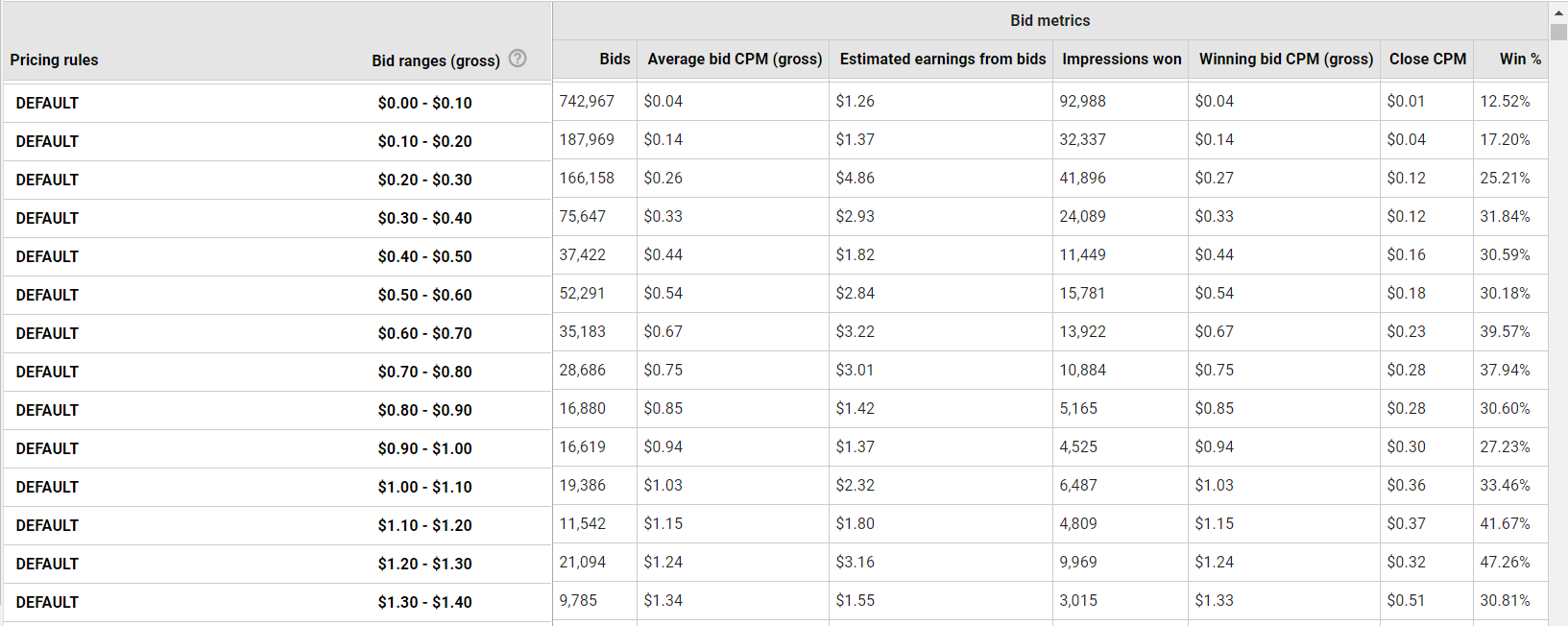We have discussed about Google Ad Exchange pricing rules many times and the opportunity it throws for Publishers. It is the only control Publishers have over the pricing of their inventory when it comes to Programmatic selling through Ad Exchange. Pricing rules allow Publishers to set their minimum price in CPM for their inventory. But pricing rules are not only about pricing. There is much more we can do with Pricing Rules which we are going to discuss in this post.
Apart from setting the floor prices, targeting is the most important feature. When you target something, say an ad unit, the pricing rule applies to only that ad unit and requests apart from that ad unit will go to other pricing rules targeting them. Also, if you have multiple dimensions / parameters that are being targeted in a single pricing rule, that pricing rule applies to the intersection of the targeted parameters. For example, if you are targeting ad unit, say X and an inventory size, say 300×250 in a pricing rule, the pricing rule will apply to ad unit X if it matches the size 300×250. There are many attributes we can target in a pricing rule such as Ad Units, Placements, URLs, Geography, Inventory Sizes, Key-Values, Audience, Operating Systems, and Device Categories. Having a granular pricing rule structure makes it easy for Publishers to analyse and immediately act if there is a potential upside that can be achieved through setting pricing rule.
Having access to bid metrics is one more advantage of having a granular pricing rule structure. As you may know, bid metrics do not support many dimensions such as ad unit or operating systems, which are important dimensions for analysing and optimising ad revenue. However, bid metrics are important for detailed analysis and setting up of ideal floor prices. But when you don’t get the combination of both, the entire data becomes useless. That’s when pricing rules come to the rescue. For example, in Google Ad Exchange reporting, it is impossible to get bid metrics along with DPF ad units as a dimension. So you won’t know how much advertisers are bidding for each ad unit. Further the CPMs among the ad units vary so you cannot event take a subjective call and there is little room for guessing.
But Bid Metrics support pricing rule as a dimension which means you will know the bid ranges and bidding patterns for each pricing rule. So for a pricing rule targeting an ad unit, you will know the bid range and bidding pattern for that ad unit as well. Similarly if a pricing rule targets an ad unit and an operating system, you’ll know the bid ranges for that particular ad unit and operating system where as these two dimensions are unsupported for bid metrics unless you have a pricing rule targeting these two attributes. So the more granular your pricing rules are, more granular the reporting gets and more granular the analysis you can do to get more efficient results. As I have mentioned in my earlier blog Experiment 3: Using Bid-Range data to determine the right floor prices, bid metrics are not fully available because of advertiser opt-outs. But the available data (~30-70%) should suffice for a good analysis and better decisions.
This is what a sample bid data report looks like:

So having a floor price of say $0.30 will eliminate all the bids below $0.30 and you’ll see impressions won for that ad unit as 0. This data is quite distorted as you will not know how many impressions would have won below $0.30 if you had lower floor. In this case a floor of $0.00 will give you more detailed bid and impression distribution from $0.00 to maximum bid. But you cannot afford to put a zero floor across your inventory just for this bid analysis unless you can set multiple pricing rules for same set of inventory in parallel.
Using Tercept’s dynamic floor optimisation, we can test multiple floors in parallel where we can set $0.00 floor for one of our pricing rules and assign, say 5 – 10% traffic to that floor so that we will always know entire bid range for that pricing rule which we can use to analyse and optimise the rest 90% of the requests using different floor prices.
So, having a more detailed pricing rule is one of the important steps in a successful ad revenue optimisation strategy.
If you found this post useful, please don’t hesitate to subscribe to our blog!
Author
Vinay B Rao
Senior Business Analyst, Tercept

Great blog post!!! And now they took the bid metrics report away from publishers. The last piece of auction insights we had. It’s ridiculous.
Thanks for the comment Mathias. It’s very unfortunate that Google has taken the bid metrics away despite promises that they will provide more transparency with bid data for publishers after the transition to first price auctions.
However, at Tercept, we have evolved our technology keeping the first price auction world in mind and despite the lack of transparency from Google’s side, our algorithms are able to track & maintain data that helps us predict the right price to be used for every individual user in the auction.
Please don’t hesitate to to reach us at [email protected] if we can help in any way.
Best,
Gourav